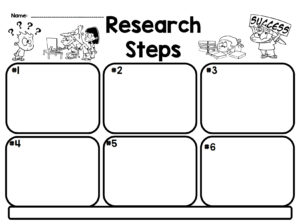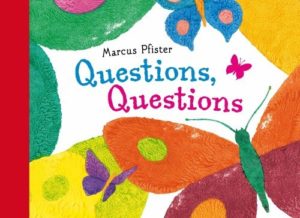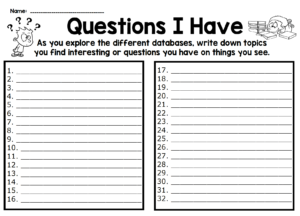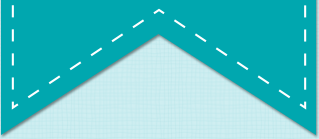It‘s Research Time!
I love starting research with my elementary kids! You might call me crazy, but I actually love helping kids find things they are interested in learning about, and then connecting it to the research process. I’ve posted several blogs about doing research with K-2 as well as with the upper grades, but thanks to my husband, I found a perfect way to get kids of all grade levels super excited about starting their own research project!
If you have been following me for a while, you know we have a “pet” wild lizard that lives in our backyard. We even made an introductory video “The Porch Lizard” about her when we launched our website back in July 2016. We’ve become so attached to her, that my husband has logged well over 200 videos about her daily life, and he used them to create a new video called “A Lizard Named Liz”. I was able to use this video with Kinder through 5th grade kiddos and totally hooked them into research! Here’s what I did!
I had each student pick up a clipboard, pencil, and then a copy of the Research Steps paper. We reviewed the two different types of books again (Fiction and Non-Fiction), as well as their definitions. Then I explained that we were going to be focusing this 9 weeks on Non-Fiction books and databases and how they relate to research.

I also had these books up on my whiteboard that we will read later in the next couple of weeks.


I asked the kiddos, “Does anyone remember the first step of the research process? Look closely at the two books and they may give you a hint.” I had them write “Ask Questions” in the first box on the research steps page. Then I told them about our new “visitor” that had appeared on our back porch over the summer. I explained that when it scampered across our patio, both my husband and I wondered, “What was that?” Our QUESTION spurred us to find the answer and learn more about it. Thus began our research journey.
Step #1: Asking Questions
At this point, I asked the kids, “What questions do you have?” and our course, they wanted to know WHAT it was. Once I told them it was a lizard, they had all kinds of other questions, which I wrote down on the board.
- What kind of lizard?
- Is it a male or female?
- How big was it?
- What does it eat?
- Where does it live?
Step #2 Brainstorm and Step #3: Locate Resources
I told them that my husband and I had these exact same questions, so we came up to the library and researched through our library’s non-fiction books and databases.
Step #4: Taking Notes and Step #5: Organize
We were having so much fun finding answers, that my husband even contacted a scientist at the University of Texas in Austin to find out more information. We decided to put everything that we learned together into a video so that we could share what we learned with others. At this point, I asked them, “Would you like to see the video we created?” and all grade levels shouted a resounding “YES!”
Step #6: Improve
Then we watched the video “A Lizard Named Liz”.
As we started watching the video, kids began asking additional questions. Each time, I wrote their new question on the board.
- What happened to her tail?
- Who would attack a lizard (predators)
- Will her tail grow back? Will her toe grow back?
- Is she still there?
- How long will she live?
- Does she hibernate like a bear?
- Will she have babies?
By the time the video was over, the questions were still coming! I explained to them that sometimes, even after you have gone through the entire research process, you still have more questions. I asked them, “What do you think you can do at that point?” They immediately shouted, “Start all over again!” Their excitement at thinking there might be ANOTHER video was so much fun to watch. I had to promise that I would let them know THE SECOND that Liz turns up again in our backyard. (We’re all crossing our fingers that she returns this spring!)
Connecting to Their Own Research:
At that point, I had them turn their Research Steps paper over to the other side. I explained that they had the rest of the library time to write down questions about things THEY wanted to learn more about. I told them they could work together to brainstorm, walk through the nonfiction section for inspiration, or look at the various books I had on display. (I had several “I Wonder Why” books out…these have great questions on many different topics.)

Since the video lesson took so long, we didn’t have much time to add to our question list, but I did tell them that they would have their entire library time next week to explore our databases and get even more ideas to write down. I wish you could have seen them leaving the library…all wanting to tell me the things they had already put down on their list! It was definitely one of those “YEAH! I DID SOMETHING RIGHT!” moments!
So that’s it in a nutshell! 🙂
I’d love to hear how you start research with your kids, and the ways you get them excited about the process. Please share!















Where can I get copies of the “Research Steps” and “Questions I Have” worksheets?
Amy, I am making a few changes to them and adding another variation. I should have them posted in my store by the end of this weekend. 🙂
If you make one of these research pages for the Super 3 for K-2, I will gladly purchase!
Thanks Kellie! I’ll add that to my suggestion list! 🙂